Barcelona | Inditex (Zara, Massimo Dutti) has always been at the forefront of digitalization of physical retail. But digital enabled shopping experiences are not limited to Inditex’s premium brands but are also introduced to the Inditex outlet brand Lefties. One of the most impressive digital signage concepts currently being rolled out. invidis was on site for the check-out experience.
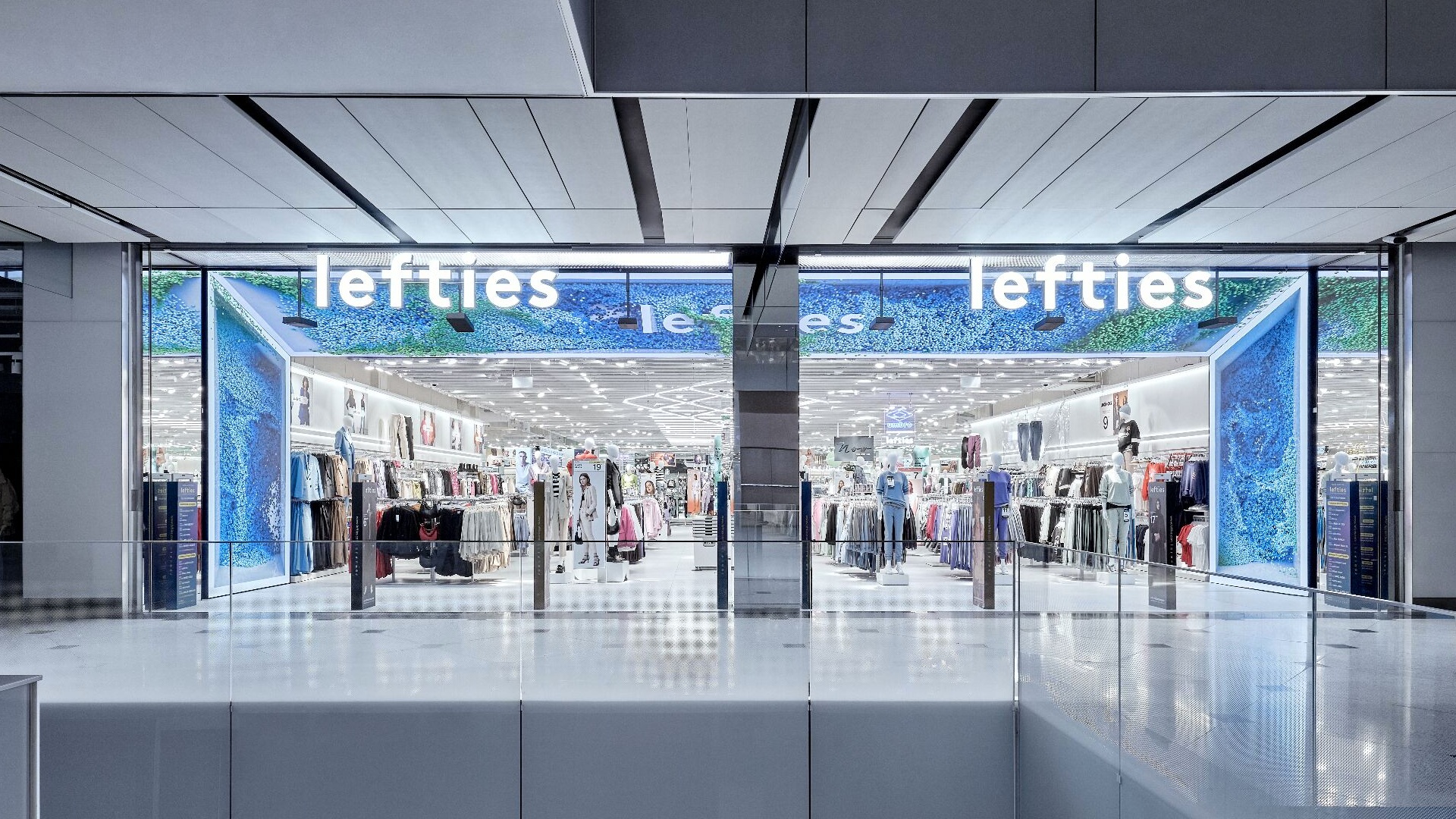
Inditex: Even the Check-out Is an Experience
The Inditex outlet concept Lefties is not one of the Spanish fashion group’s premium retail formats. It is all the more surprising that a discount line was chosen for the next gen of digital instore technology at the world’s largest fashion retailer. The latest digital signage touchpoint concepts meet branch automation and offline/online connectivity. The results are impressive.
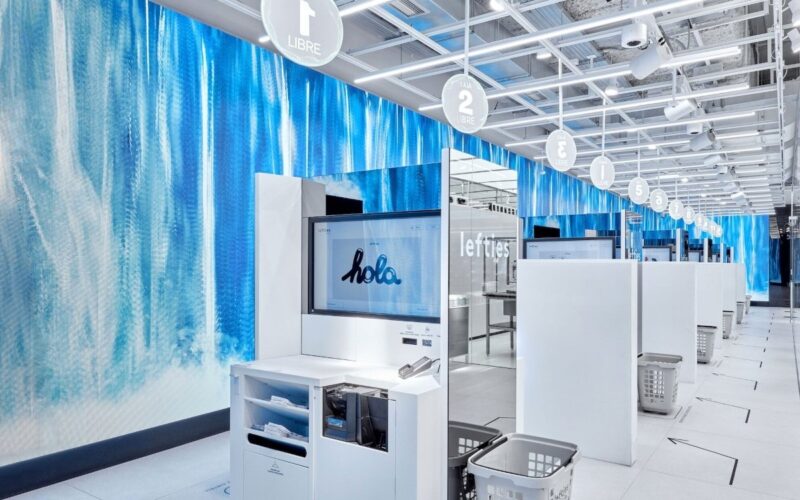
Of course, the newest Lefties branch in the Diagonal de Mar shopping center in Barcelona features a digital facade. An LED arch runs around the large entrance area and is easily visible from afar. With changing content and localized welcome messages, Lefties presents itself as a modern retailer. In the entrance area there are not only highlight areas – including a collaboration with the sports brand Umbro, but also lockable parking spaces for e-scooters. Public scooter sharing providers are banned in Barcelona, which is why the density of private e-scooters is extremely high compared to other European cities.
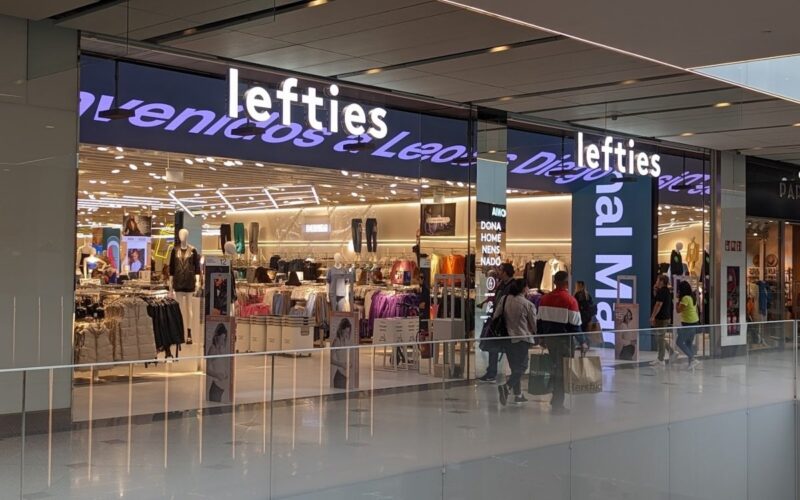

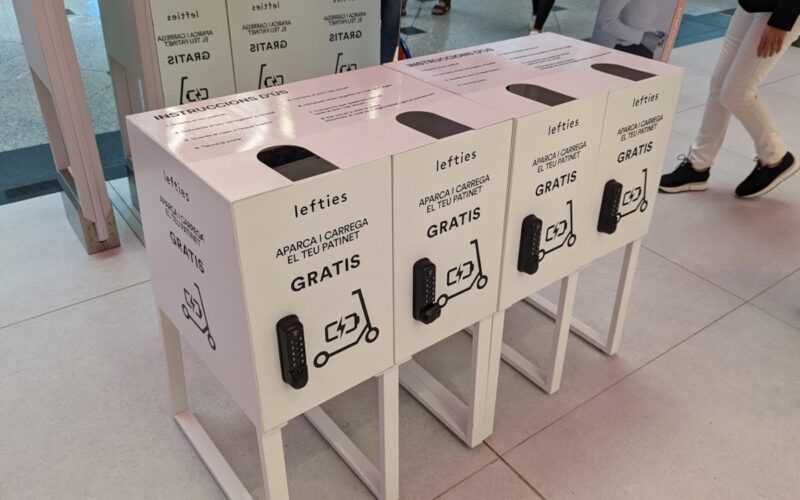

The digital signage highlights in the store – Lefties was launched to sell of remaining stock of Inditex sister brands – are located at the back. The customer reaches the digital revolutions past all sorts of LED banners, LED pillars and LED cubes in highlight zones. Some well hidden, others impossible to miss:
Fitting Room
The fitting rooms are fitted with presence sensors indicating if cabins are available. The lighting in the changing rooms brightens up when a customer enters while the integrated RFID-sensors display the items for try-on brought by the customer on an integrated touchscreen. Items that do not fit can be returned via a hatch in each cabin. A conveyor belt transports the items to a processing room in the back of the store, where the items of clothing are folded by hand and put back onto the shelf by staff. Thanks to the integrated RFID price tag, returned items disappear from the digital shopping cart on the individual screen in the fitting room. Customers can check-out directly by app without queuing and the integrated security labels are deactivated.
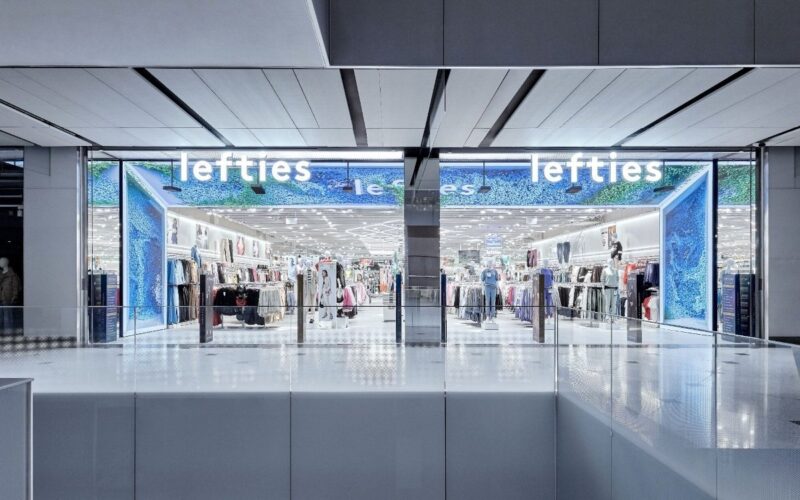

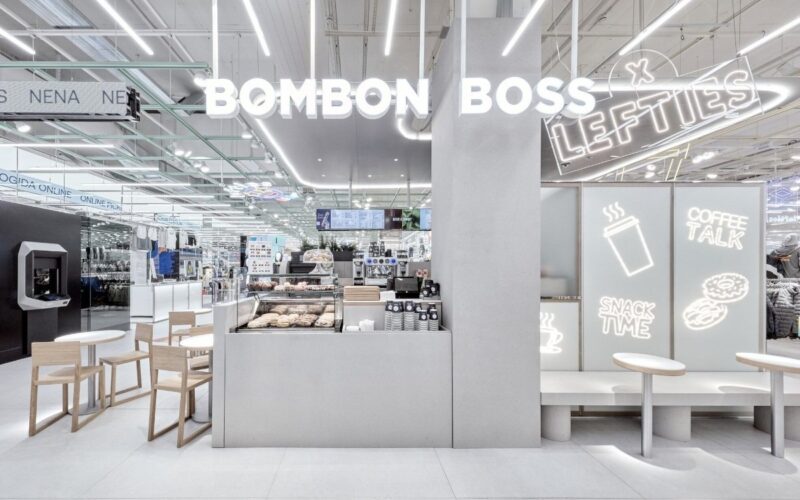
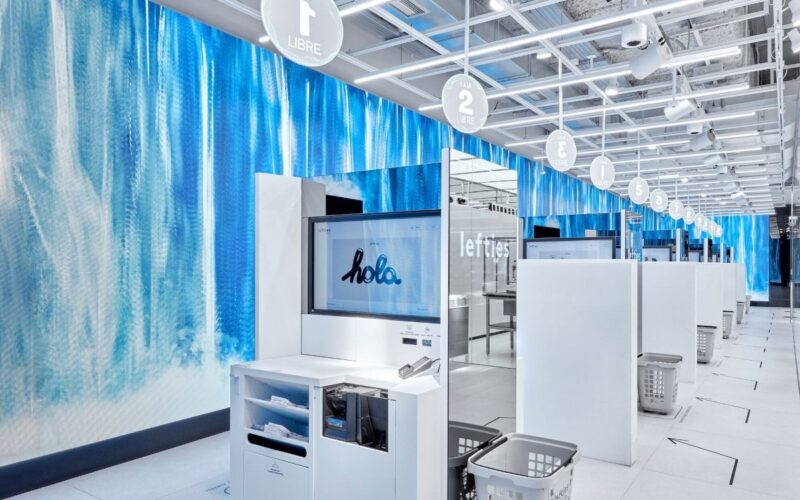
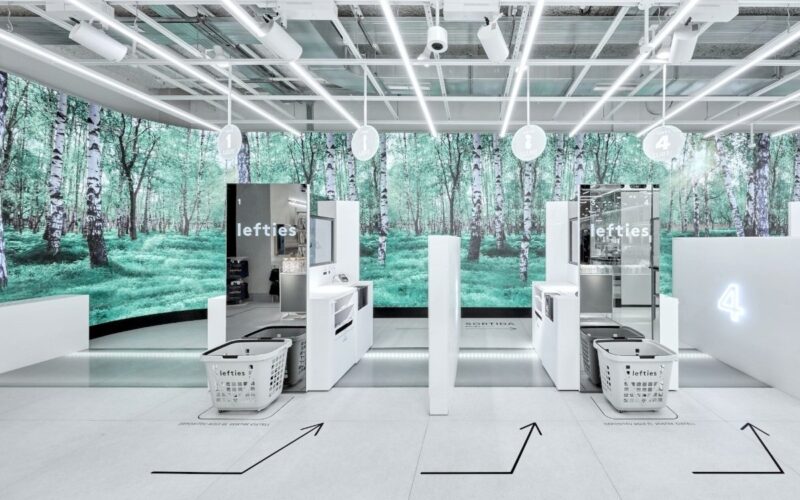
Click & Collect
Inditex is a strong believer in Click & Collect and has been relying on automated omnichannel solutions from Cleveron for years. Lefties Barcelona also features a container-sized, robot-enabled Click & Collect parcel delivery terminal, elegantly clad with a mirror. Inditex has been integrating click & collect terminals in more and more Zara flagship stores to make the collection and return of online orders more efficient.
The Spanish fashion giant is best in class in linking online and offline activities more closely than most competitors. Due to an end-to-end RFID logistics chain, each item is tracked from factory to sales on a single platform. That enables Inditex brand not only to track instore stock each day and not only once a year as common in the industry but only orders are also fulfilled directly in local stores and not just from central distribution centers.
Inditex is also testing dedicated returns terminal at the store in Barcelona. Unwanted online orders can be returned instore at a terminal enabling Inditex to optimize in-store logistics and ensure quick processing. Items are back on shelf within hours as the return is managed instore and not in central facilities somewhere in Eastern Europe. Especially when it comes to fast fashion, retailers are under immense pressure to bring returned goods as quickly as possible back to the point of sale.

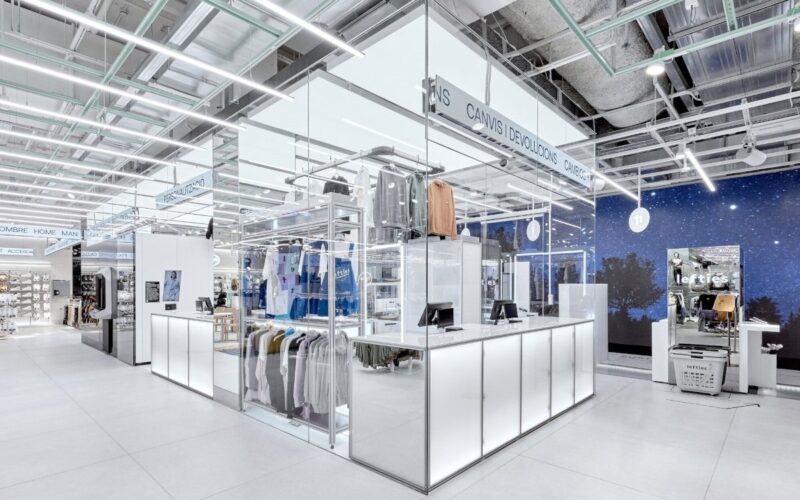
Self Check Out (SCO)
The absolute digital signage highlight are not the dozens of LED installations on walls and pillars, but the self check-out zone. Inditex relies on self-check-out in XXL. Twelve check-out stations with XXL touchscreens, RFID recognition and cash machines replace staffed cash registers. Customers are automatically assigned an SCO station that are exceptionally large with an approximately 42” touchscreen. The items only have to pass the checkout counter to be recognized by the system. Payment is made via cards, app or cash terminals.
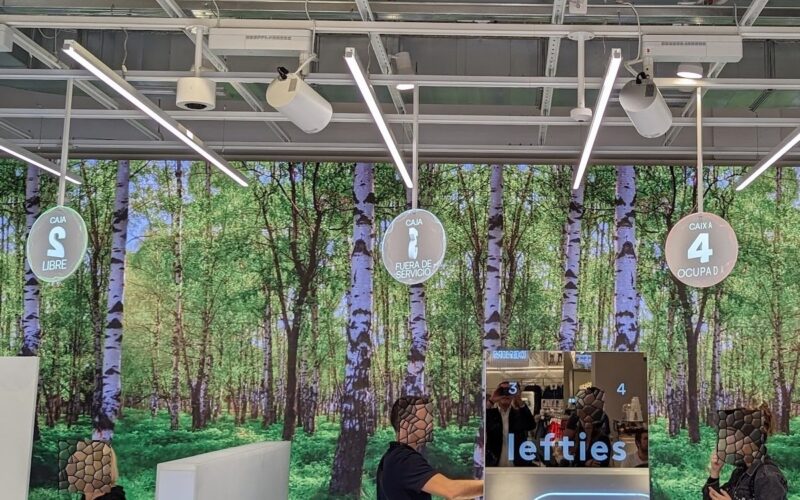
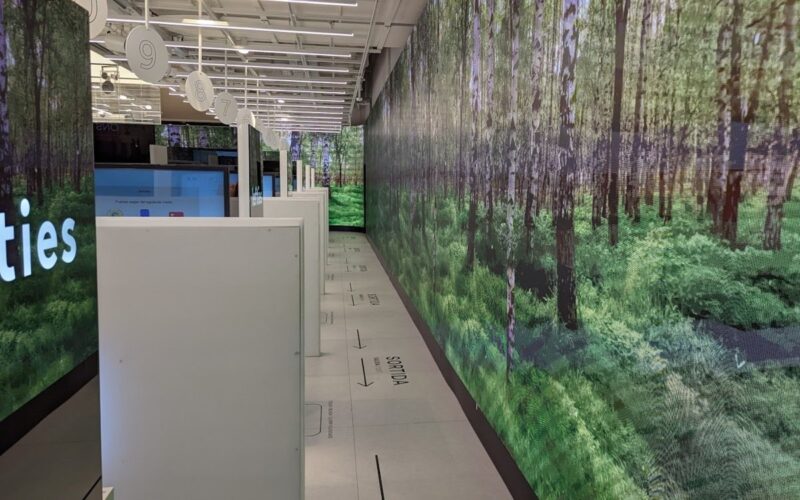


Above the SCO stations, Inditex uses animated signage with lamp-shaped projectors that are integrated into the ceiling light tracks. The reliability of RFID detection is fascinating. A whole bundle of shirts was reliably detected 10 centimeters above the SCO table.
A special digital signage treat is the floor-to-ceiling LED wall in the check-out area, which creates a calm atmosphere with natural content and sound and turns even waiting into an experience.
In addition to 12 SCO stations, customers can also use two staffed checkouts for complaints and payments. In the background, Inditex also offers other personalization services such as individual embroidery or printing of textiles. Also new for Inditex is a Lefties Cafe, which is intended to increase the length of stay in the store.
invidis comment
The Lefties concept proves once again how far Inditex is ahead of the competition when it comes to store digitization. With omnichannel integration, the seamless use of RFID labels, integration of robot terminals in the store and intuitively operated SCO stations, Inditex is setting new standards. Especially in times of staff shortages and high logistics costs, a high level of automation close to the customer is the right way.
